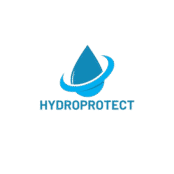Understanding Hotmelt Roof Waterproofing
When considering roof waterproofing solutions, hotmelt technology often stands out for its durability and effectiveness. However, like any advanced solution, it is subject to numerous myths. As owners of halls, warehouses, developers, and property managers look for reliable insulation options, it’s crucial to discern fact from fiction about hotmelt roof waterproofing.
Common Myths About Hotmelt Roof Waterproofing
Hotmelt roof waterproofing is sometimes misunderstood. Let’s explore some common myths and clarify them for a comprehensive understanding.
Myth 1: Hotmelt is Only for New Builds
Many people believe that hotmelt waterproofing can only be applied to new constructions. However, hotmelt systems are versatile enough to be used for both new builds and refurbishment projects. They can easily be applied over existing substrates, extending the life of older roofs. This adaptability makes hotmelt an excellent choice for a variety of projects, whether you’re erecting a new warehouse or maintaining an existing property.
Myth 2: Hotmelt Systems are Prone to Leaks
It’s a common misconception that hotmelt systems are more susceptible to leaks than other waterproofing methods. In reality, when professionally installed, hotmelt provides a seamless, monolithic membrane that offers superior resistance to water penetration. The ability of hotmelt to form a continuous, joint-free layer minimizes weak points that could potentially lead to leaks, making it one of the most reliable solutions available.
Myth 3: Hotmelt is Too Expensive
The perception that hotmelt waterproofing is prohibitively expensive deters some property managers from considering it. While the initial installation costs may be higher compared to other methods, the long-term savings from its durability and low maintenance requirements often offset these costs. Hotmelt systems are known for their longevity; they can last upwards of 40 years, reducing the need for frequent repairs or replacements.
The Advantages of Hotmelt Roof Waterproofing
Beyond debunking myths, it’s beneficial to clearly outline the advantages that make hotmelt an attractive option.
Long-Lasting Performance
Hotmelt roofing systems are designed to endure harsh weather conditions and heavy foot traffic, making them exceptionally durable. Their long lifespan, often exceeding 40 years, significantly reduces lifecycle costs. This longevity is particularly advantageous for large scale operations such as warehouses and industrial facilities, where roof access for repairs can disrupt day-to-day activities.
Eco-Friendly Credentials
Sustainability is a key consideration for modern construction projects. Hotmelt systems are environmentally friendly, often comprising recycled materials and offering recyclability at the end of their life span. Moreover, they contribute to energy efficiency within buildings, which is a critical factor for developers and property managers focused on reducing carbon footprints.
Flexible Design Solutions
Hotmelt waterproofing can be adapted for complex roof designs due to its liquid application process. Whether the roof features intricate detailing or unusual shapes, hotmelt conforms perfectly, maintaining its waterproofing integrity. This flexibility supports architectural creativity without compromising functional performance.
- Durability: Provides a robust and long-lasting solution that withstands various environmental conditions.
- Cost-efficiency: Long-term savings through reduced maintenance and repair needs.
- Sustainability: Incorporates recycled materials and enhances building energy efficiency.
Implementing Hotmelt Roof Waterproofing
To maximize the benefits of hotmelt waterproofing, proper installation and maintenance are crucial.
Professional Installation
Ensuring hotmelt roof waterproofing is installed by certified professionals is the best way to guarantee its effectiveness. Trained experts understand the nuances of the application process, ensuring that each layer is applied correctly and uniformly. This attention to detail is critical to achieving the seamless membrane that characterizes hotmelt systems.
Regular Maintenance Checks
While hotmelt systems are low maintenance, regular inspections are recommended to ensure optimal performance. Scheduled maintenance helps identify potential issues early, allowing for prompt resolution before they develop into costly repairs.
Summary
Hotmelt roof waterproofing debunks myths through its adaptability, reliability, and long-term cost-effectiveness. This seamless, monolithic solution is sustainable and ideal for both new constructions and refurbishments, making it a top choice for hall, warehouse owners, and developers. By choosing professional installation and adhering to a regular maintenance schedule, property managers can ensure that their investment in hotmelt technology yields enduring dividends.

